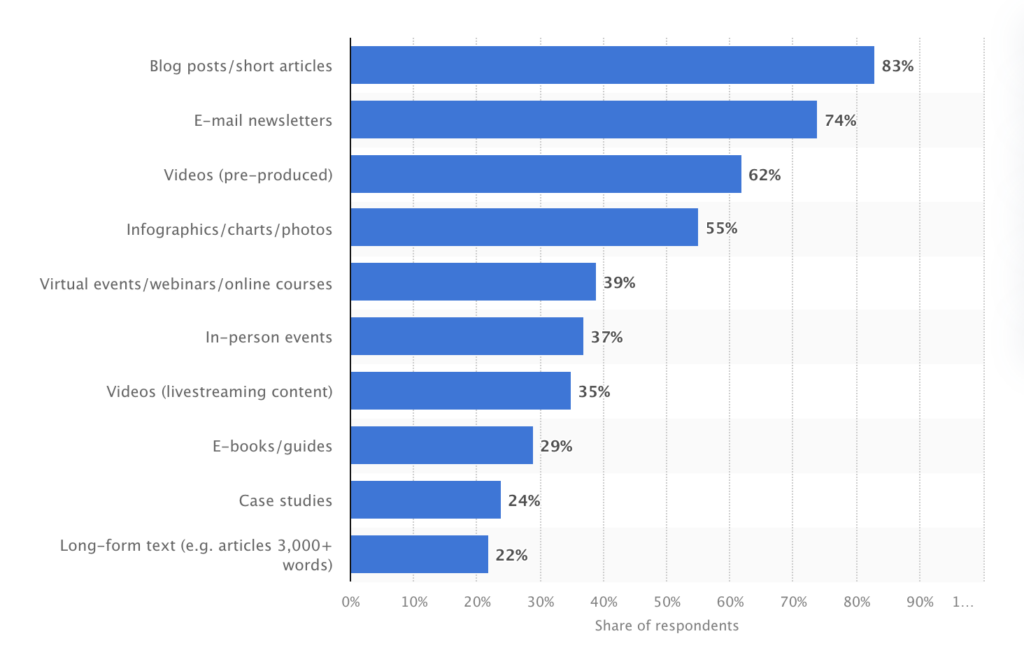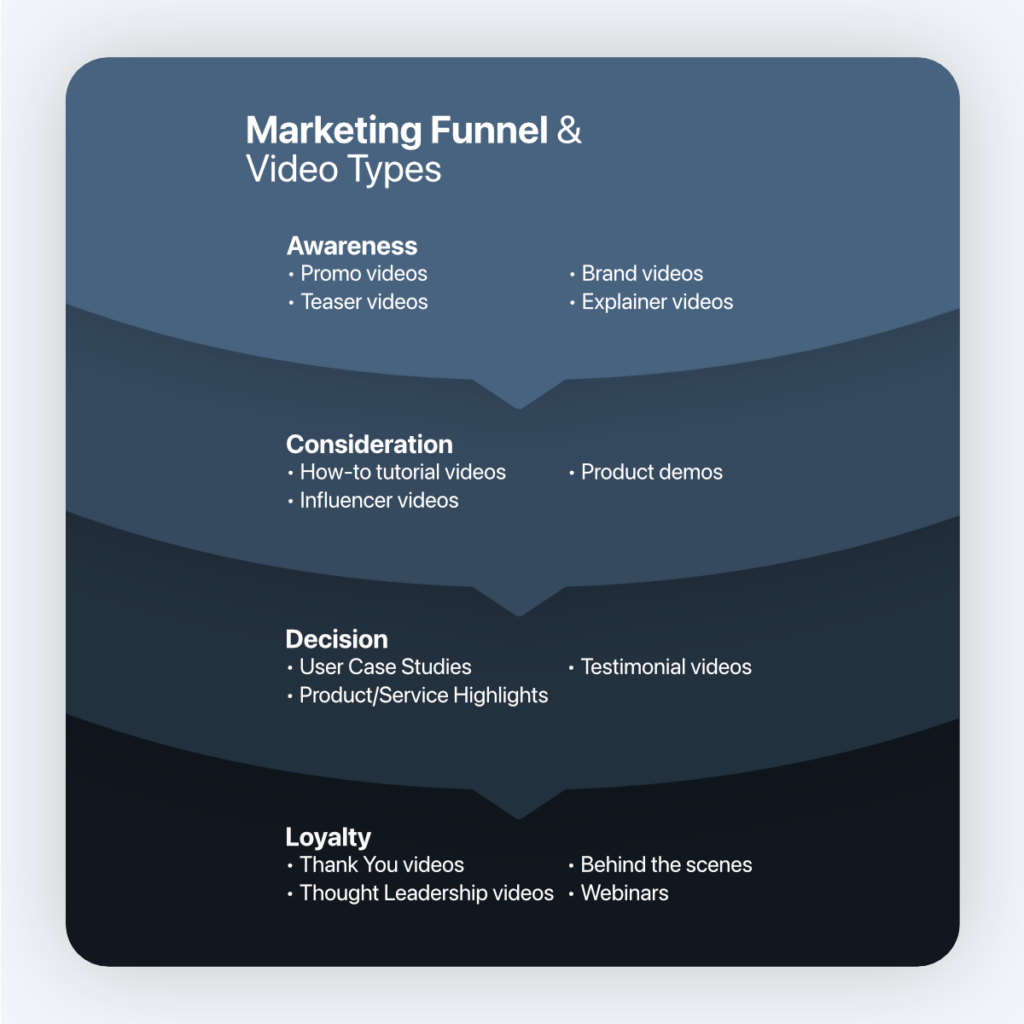Videos are no longer a small component of a successful social media marketing strategy. These days video plays such an important role in how businesses inform, engage with, and sell to their audience. Several social media platforms including Instagram and other Facebook-owned apps are prioritizing video over photos.
Essentially, the goal of any video strategy is simple – shoot and publish videos that speak about your brand, product or service. However, when you consider the volume of branded and unbranded video content available on social media, as well as the steady decline of the human attention span over the last few years, things get more complicated
There is a clear need to maximize your social media video’s impact to stand out from the noise and grab the attention of your potential customers. Marketers understand this, which is why videos represent the top 3 content types used by B2C marketers in North America.

Here are five tips that will improve your social media video marketing strategy:
- Determine your Video goals
- Diversify your video types
- Leverage each platform’s strengths
- Optimize your videos for SEO
- Measure the right metrics
1. Determine your video goals
One of the first things to tackle in your social media video marketing strategy is identifying your goals. A quick way to get started is by answering these questions; Who is your target audience? What message do you want to communicate with this video? What stage of the marketing funnel are your watchers? Is this an organic video or will it be a sponsored post? What action do I want the watchers to take?
This content intelligence platform even suggests separating brand marketing goals from revenue marketing goals.
Some high-level Social Media video marketing goals include:
- Increase brand awareness
- Increase conversions – lead, sale, subscriber, traffic, etc.
- Brand engagement
2. Diversify your video types
The next step in your social media video marketing strategy is to identify what types of videos will help you reach your goals. Keep your current and potential customers in mind at this stage. What information do they need at each stage?
Here are some recommended video types based on each stage of the marketing funnel.

Awareness Stage: Promo videos are engaging and tease your product and service. The goal here is to pique your watcher’s interest and drive them to your website or landing page for more information. On your website/landing page, you can use explainer videos to talk about your products or services in an engaging and meaningful way.
Consideration Stage: How-to tutorial videos that show potential customers a step-by-step process of how to use your product or service. These videos are a great way to increase your SERP as they are a direct response to questions your audience might have. Other videos you can produce for this stage are: product demo videos, brand videos, influencer videos and thought leadership videos.
Decision Stage: The goal here is to provide the extra push that a customer needs to take an action. User case studies and testimonial videos are some great examples of videos for this stage. Videos around ease of use or premium feature highlights can work well.
Loyalty: Webinars, thank you videos, and product updates are just some of the kinds of videos you can use to build loyalty and advocacy for your brand. Sections from webinars can be repurposed to educate potential customers in the consideration stage as well.
To make your videos even better, you can choose from several video styles – voice-over, animated, text-based, talking head, skits etc. Things like what your audience responds to, your team’s capacity, timelines and budget are important considerations on what video style to use.
3. Leverage Each Platform’s Strengths
Each social media platform has strengths and functionalities that you can leverage for your video marketing strategy. Facebook, Instagram and YouTube allow you to categorize videos into playlists. This works well for recurring video series. Most social media platforms have live streaming video capabilities – some even have live shopping capabilities. Instagram and YouTube offer long-form (IGTV) and short-form video options (YouTube shorts, Reels) and much more.
Taking each platform’s functionalities and strengths into consideration allows you to meet your audience where they are and stay ahead of the curve. Stay up to date with each platform’s features updates with this evergreen cheat sheet from here from Sprout Social.
4. Optimize your videos for SEO
Search engines love videos! The symbiotic relationship between YouTube and Google offers you the opportunity to make a bigger impact with video. If you do a quick Google search, you will find that the most relevant videos almost always show up on the first results page.
According to Hubspot, here are 8 SEO tips to help your videos rank better:
- Rename your video file using a target keyword.
- Insert your keyword naturally in the video title.
- Optimize your video description.
- Tag your video with popular keywords that relate to your topic.
- Categorize your video.
- Upload a custom thumbnail image for your video’s result link.
- Use an SRT file to add subtitles & closed captions.
- Add Cards and End Screens to increase your YouTube channel’s viewership.
5. Measure to the right metrics
Effectively measuring and communicating social media video marketing campaign results is just as important as creating the video. An important question to ask here is “What metrics should I be paying attention to? Watch minutes, view counts, likes, comments, shares or saves?”
The metrics you use to measure your success are dependent on your goal for the video. If your goal was to raise awareness for your product/service, you should be paying attention to the landing page traffic from the video. Don’t forget to check out your shares and saves too, it can be a good indication that your audience is paying attention.
Each platform has native analytics that will give you an insight into the performance of your social media video.
The key to a successful video strategy is great content that connects with your audience. You need to make sure your videos are of the highest quality and connect to your potential customer’s needs and pain points. Don’t forget to add a little personality too! You are now well on your way to creating an excellent social media video marketing strategy.
If you are looking to improve your social media video results, or have questions on how to scale your next campaign, we’d love to chat!
